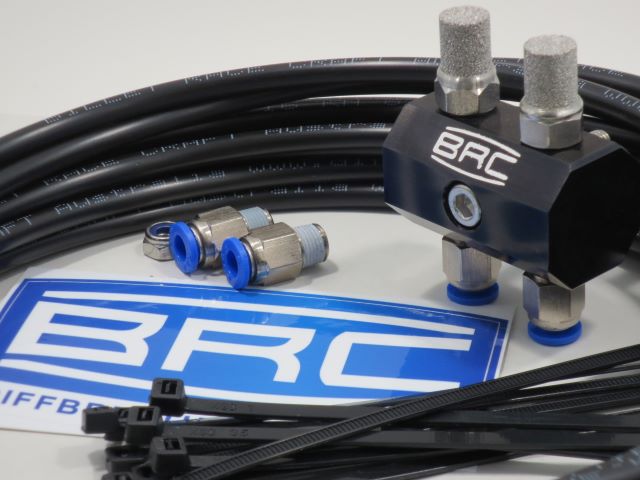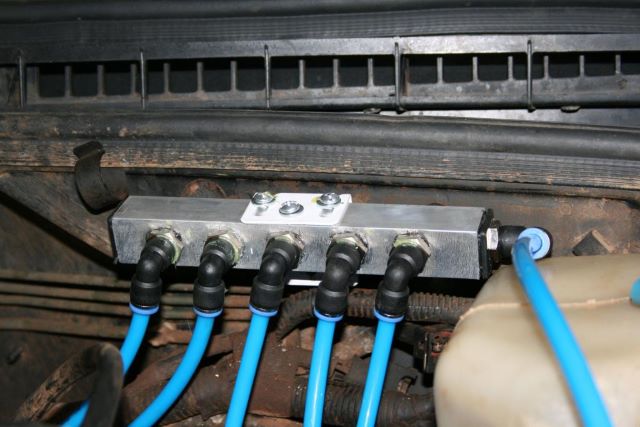The Importance of Differential Breathers: A Comprehensive Diff Breather Replacement Guide
Every off-roader who frequently crosses rivers probably has considered adding a snorkel to protect their 4x4s engine, but very few off-roaders understand the importance of differential breather kits. Diff breathers are underrated 4×4 accessories that only the most seasoned off-road enthusiasts understand their importance. While a differential rebuild isn’t as expensive as a rebuild on the engine, preventing your differentials from sucking in tons of water into the housings is just as important. After all, you can find these 4×4 accessories online for less than $100, so it only makes sense to get them.
The Importance of Differential Breathers
Your differentials are fitted with breather valves that vent the built-up pressure from inside when they get hot. Aftermarket differential breathers raise the breather above stock levels (generally much higher on the firewall). On some models, the stock differential breathers are only as high as the chassis rails, so as soon as the chassis is underwater, things can go bad. Raised differentials become important when trundling along the short-stick locked in, causing everything in your vehicle’s driveline to get hot, including the axles, bearings, pinions, CVs and differential centres.
As the air in the differential housings heats up, it expands, thus pressuring the differentials. The breather, as its name implies, allows the housing to release the pressure out rather than through your axle seals. As you can tell, the differentials already have a system in place to release some of the heat. However, this isn’t enough when crossing rivers, boat ramps or anything else you may encounter on your journey. When submerged, your driveline will stay heated for longer than you’d like it to, and you’ll have to sit there and wait for it to cool down.

As aforementioned, when the driveline gets heated, the air is vented out. But when it cools down, it sucks that air back in. So if the differentials are heated and the breather submerges, it’s going to suck in tons of water through. Some breathers have a one-way valve that closes when the pressure flips, in which case the water can go through the pinion seals or axle.
Replacing Your Differential Breathers
You’ll need a differential breather kit that’s made for your vehicle’s model, make and year. Besides the kit, you’ll probably need a spanner, Allen Key, sharp blade and side cutters. The kits cost less than $100, and generally come with all the hardware you need to install them. When shopping for these 4×4 accessories online, you’ll also find universal kits that fit most 4x4s.
Before performing the installation, always read the instructions on the kit. Most kits will have pretty simple instructions on what to do. If you get a generic kit, the process will be similar for most vehicles. If you aren’t comfortable performing the installation on your own, there are many professionals that can do it for you.
First and foremost, you have to locate and remove your factory breathers, which are located under the differential pumpkins. On some vehicles, like the Amarok, it’s just a barbed push-type fitting, and all you need to do is remove the factory hose and follow it back into the guts of the tray. Once removed, plug in the new hose. They should be the same diameter if you got a vehicle-specific kit. Make sure you use the longer hose for the rear differential, else you’ll be running them twice. Use silicone to ensure a tight seal.

Next, run the extended line up to the chassis. If something is connected to the differential, like an air-locker line or wiring, follow it. Just make sure you leave some slack for the differential at full down travel. This is extremely important, otherwise, if you put your rig on a two-post hoist, the differential will drop to full down travel. Furthermore, make sure you don’t run out of hose length so you don’t test its tensile strength.
Once you’ve routed the line to your vehicle’s chassis, you’ll probably find a wire harness, brake line or fuel line to mount the hose to. All you have to do is tighten the line using zip-ties. Then, you’ll need to run the breather lines to the firewall. Once there, run them to the top and find places where you can secure them. You can do that just about anywhere, and you should prioritise keeping things neat.
Last but not least, you have to find a place to secure the breather head. Do this by screwing in the push-pull fittings and inserting the lines. If you need to remove the lines at any point, just push the blue ring on the fitting, then pull the line. And that’s it – you now have differential breathers up high, out of harm’s reach.
However, you still have to keep in mind that going through cold water after being in the heat for hours can shorten the lifespan of your wheel bearings and brakes. So, try to wait a bit for things to cool before drowning your running gear. This will help you avoid costly replacements sooner than you’d like.



